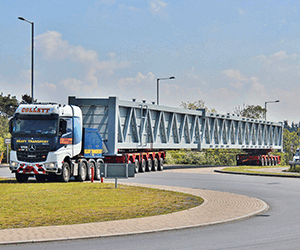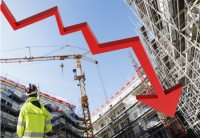During evidence for the initial hearings, experts called for a series of immediate changes including a ban on all external walls that are not of Euro class A1 – the highest non combustible material standard.
But chairman Sir Martin Moore-Bick has rejected an immediate moratorium on the use of materials of Euro class A2 pending the outcome of Phase 2 of his Inquiry.
Sir Martin also held back on recommendations relating to the widespread use of sprinklers, better materials testing regimes and reducing the definition of high-rise residential buildings from 18m to 11m.
Detailed scrutiny of building processes, material selection and testing will open with hearings starting from January 2020 and expected to last for 18 months.
Already 200,000 documents have been assembled for this next phase.
In his initial report published today, Sir Martin did call for faster replacement of ACM clad buildings and warned that decorative architectural crowns must be placed under scrutiny after early evidence showed the roof of the Grenfell Tower player a key part in spreading the fire around the building.
He said: “It is clear that the use of combustible materials in the external wall of Grenfell Tower, principally in the form of the ACM rainscreen cladding, but also in the form of combustible insulation, was the reason why the fire spread so quickly to the whole of the building.
“It is essential that it be done as quickly as possible and concern has been
voiced publicly, most recently by the House of Commons Communities and Local Government Select Committee, about the apparently slow rate of progress in carrying out the work.
“In the light of what has been learnt in Phase 1 about the behaviour of ACM panels with polyethylene cores when exposed to fire, I wish to add my voice to that of the committee in expressing the view that the programme of remedial work should be pursued as vigorously as possible.
“In view of the part played by the architectural crown in the spread of the fire at Grenfell Tower, particular attention must be paid to decorative features composed of combustible materials.”
Phase 2 inquiry
The principal focus of Phase 2 will be on the decisions that led to the installation of a highly combustible cladding system on a high-rise residential building and the wider background against which they were taken.
Sir Martin said: “The evidence put before me in Phase 1 is already sufficient to demonstrate that a number of improvements can be made both in the way in which high-rise residential buildings are designed, constructed, approved and managed and in the way in which fire and rescue services respond to fires in such buildings.
“The findings made in this report provide a springboard for the next phase of the inquiry, which will consider among many important things the design of the cladding and choice of materials, the testing and certification of those materials and the role of central and local Government in promoting fire safety both by appropriate legislation and guidance and provision of effective fire and rescue services.”
Matters of particular concern
- The decisions relating to the design of the refurbishment and the choice of materials.
- The regime for testing and certifying the reaction to fire of materials intended for use in construction.
- The design and choice of materials.
- The performance of fire doors in the tower, in particular, whether they complied with relevant regulations, their maintenance and the reasons why some of the self-closing devices do not appear to have worked.
- The organisation and management of the London Fire Brigade, in particular in relation to the formulation of policy in the light of experience, the arrangements for training firefighters and control room staff, and the arrangements for sharing information about the particular problems associated with fighting fires in high-rise buildings.
- The warnings of potential fire hazards given by the local community.
- The authorities’ response to the disaster.
He added that it had now become clear that some aspects of the building which were at one time thought to require careful investigation did not play a significant role in the disaster and would not require further examination.
Initial concerns about the width of the stairs, supply of gas, electricity and the history of electrical surges will not be placed under further scrutiny.
Key recommendations from phase one
Evacuation
– Government must develop guidelines for carrying out partial or total evacuations of high-rise residential buildings, including measures for disabled people, older people and young children
– fire and rescue services must develop policies and training for partial and total evacuation of high-rise residential buildings
– all high-rise residential buildings must be fitted with sounders or similar devices enabling fire services to send an evacuation signal
– all fire and rescue services must be equipped with smoke hoods for evacuation through smoke-filled exit routes
Owners and managers of all high-rise residential building must:
– draw up and regularly review evacuation plans, provide copies to their local fire service and place in an information box on the premises
– prepare personal emergency evacuation plans (PEEPs) for all residents whose ability to self-evacuate may be compromised and keep these in the information box
Emergency calls
– Draw a clearer distinction between callers seeking advice and callers who believe they are trapped and need rescuing
– all fire and rescue services must develop policies for handling a large number of fire survival guidance (FSG) calls simultaneously
– electronic systems must be developed to record FSG information in the control room and display it simultaneously in units at the fire
– policies must be developed for managing a transition from “stay put” to “get out”
– control room staff must receive training on handling such a change of advice and conveying it effectively to callers
Fire doors
– Owners and managers of must carry out an urgent inspection of all fire doors
– carry out checks no less than every three months to ensure that all fire doors are fitted with effective self-closing devices in working order
– all those who have responsibility for the condition of the entrance doors to individual flats in high-rise residential buildings with unsafe cladding must ensure that they comply with current standards
Floor numbers
– floor numbers must be clearly marked on each landing within the stairways and prominently in all lobbies
Plans and inspections
Owners and managers of every high-rise residential building must:
– provide local fire service with information about the design and materials of its external walls and inform them of any changes
– provide fire service with up-to-date plans, showing key fire safety systems
– regularly inspect lifts to be used by firefighters in an emergency, test the mechanism which allows firefighters to take control of them and report the results to the fire service every month
All fire and rescue services must:
– ensure crew managers and ranks above are trained and aware of the requirements expected during inspections of high-rise buildings
– be equipped to receive and store electronic plans and to make them available to incident commanders and control room managers
– ensure that all staff understand the risk of fire taking hold in the external walls and know how to recognise this
Communication:
– all officers who may be expected to act as incident commanders must receive training on communication with the control room
– all control room operators of assistant operations manager rank and above must receive training on communication with the incident commander
– a dedicated communication link must be provided between the senior officer in the control room and the incident commander
Command and control:
– the LFB must develop policies and training to ensure better control of deployments and the use of resources
– the LFB must develop policies and training to ensure that better information is obtained from crews returning from deployments and that it can be made available immediately to the incident commander
– the LFB must develop a communication system to enable direct communication between the control room and the incident commander and improve the means of communication between the incident commander and the bridgehead
– the LFB must investigate the use of modern communication techniques to provide a direct line of communication between the control room and the bridgehead
Equipment
– the LFB must urgently take steps to obtain equipment that enables firefighters wearing helmets and breathing apparatus to communicate with the bridgehead effectively
– the LFB must urgently take steps to ensure that the command support system is fully operative on all command units and that crews are trained in its use
Emergency services
– each emergency service must communicate the declaration of a major incident to each other as soon as possible
– clear lines of communication must be established as soon as possible between the control rooms of the individual emergency services
– steps must be taken to investigate the compatibility of the emergency services’ systems with a view to enabling them to read each others’ messages
– Emergency services and local authorities must investigate ways of improving the collection of information about survivors and making it available more rapidly to those wishing to make contact with them
PA






























.gif)





























